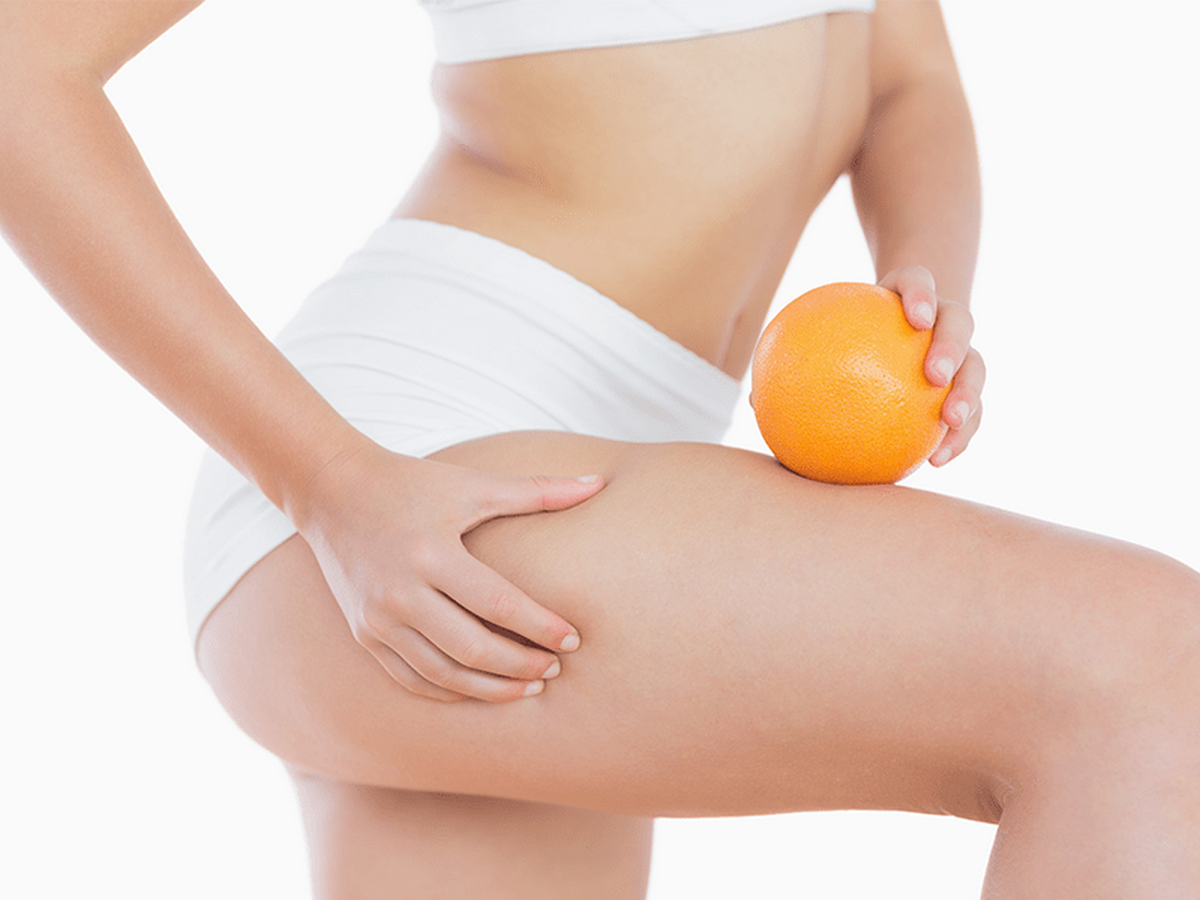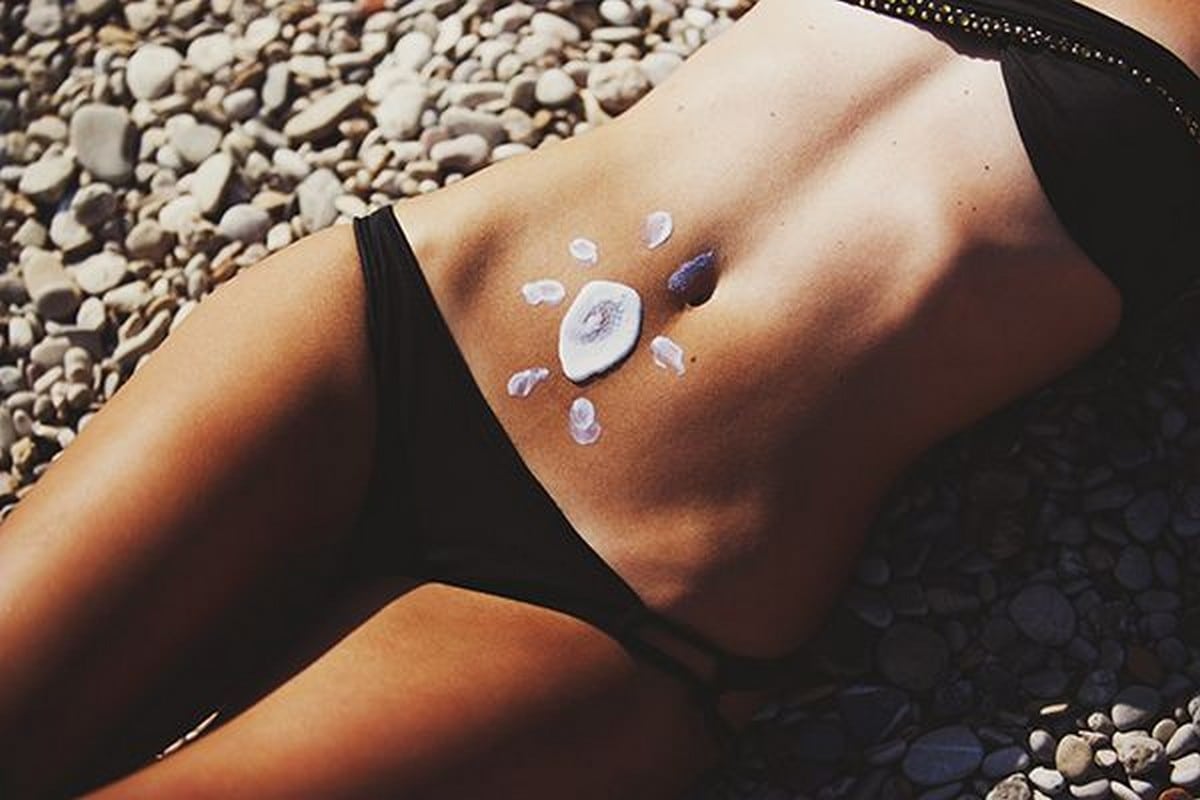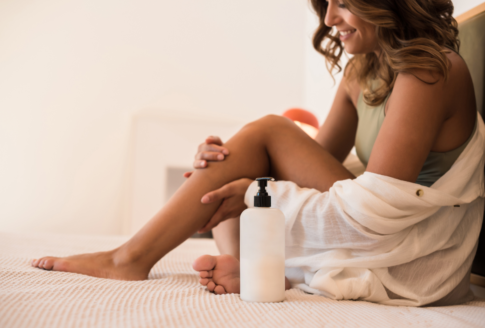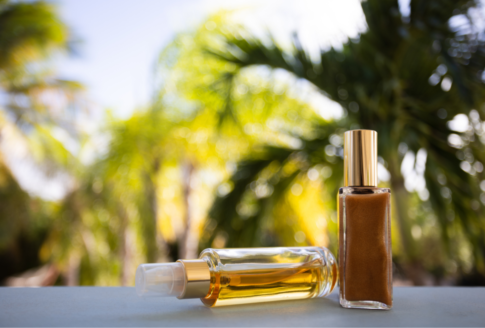Secrets for natural shine and self tanning products

If you do not want to expose your skin to the sun but want a tanned body, consider self tanning products. But it is important to understand how these products work and the importance of their careful and correct application.
Table of Contents
How do self-tanning products work?
Composition
The main ingredient in self-tanning products is the dye dihydroxyacetone or DHA (dihdroxyacetone), along with moisturizers and other substances. Dihydroxyacetone, also known as glycerone is a sugar that has been approved by the FDA (US Food and Drug Administration). It is extracted from sugarcane or other plants, acting on surface (dead) skin cells. Reacts chemically with amino acids released by dead cells (Maillard reaction), which temporarily darkens the skin and gives the impression that it has been tanned by the sun – sun exposure is not necessary for this effect.
Many new self-tanning products combine DHA with red blood cells – it takes a little longer for red blood cells to work but the color lasts longer.
Sunless tanning products, depending on their composition in DHA and other ingredients, lead to different skin tones. They act immediately, as within a few hours the skin begins to acquire a golden dark appearance. The results do not last more than 5-10 days, depending on the rate at which the skin cells are renewed.
Textures
They are available on the market as lotions, creams and sprays that you apply to your skin – however, avoid the spray so as not to inhale it.
Tips for a quick, even tan
For best results, follow these instructions:
- It is a good idea to exfoliate a few days before the self tan to remove excess dead skin cells – there is a better result on soft skin. Do not use exfoliator after the tanning product because this way the color will fade or will not be uniform.
- Moisturize your skin well so that it can better absorb the product. After a shower, dry well and apply a thin layer of moisturizer. This will facilitate the uniform action of the self-tanning product.
- Wear plastic gloves or wash your hands every few minutes to avoid staining your palms. Apply the product partially, e.g. on the legs, arms and torso.
- Apply the product on the face before the body, because it is the easiest area to apply the tanning lotion with bare hands, washing them immediately to avoid any stains. Then start on foot and work your way up. You need to put the product everywhere, under the eyes, above the eyelids, on the neck and even on the back of the ears. Keep in mind that you are trying to imitate the sun, so your focus should be on the top of the legs instead of the sides. Knees, elbows and ankles tend to absorb more sunless tanning products. To dilute the effect on these areas, rub gently with a damp towel. Mistakes with self-tan are made but you do not have to start from scratch when they happen.
- Dry and wait at least 10 minutes before getting dressed. Wear loose clothing that does not come in close contact with the skin.
- Avoid bathing or sweating for the next 10 hours. Therefore, prefer to do self tan at night, in order to take advantage of the length of the night.
In case you want to remove the product, take a warm bath and exfoliate.
Self-tanning and skin health
Self-tanning products do not provide sun protection, even though the skin is tanned. So if you spend time outdoors, sunscreen is a must.
Sunless tanning products are generally considered safe alternatives to sunbathing. The FDA has approved dihydroxyacetone for dermal application up to 15% – typically products contain 3-5% dihydroxyacetone.
However, the FDA states that the substance should not be inhaled or applied to areas covered by mucous membranes, including the lips, nose, or eye area, as the risks in these areas are unknown.
Further research has shown that a chemical reaction that occurs between DHA and amino acids in the skin may create free radicals, so a product that contains antioxidants at the same time is better [1]. Several ingredients are added to self-tanning products including perfumes and preservatives, which can cause allergic reactions. The advice given is not to use it for a long time.
Do not use these products if you have scheduled surgery on your skin. In a case published in 2013, an image of a postoperative lesion was created on the skin of a 34-year-old woman who had self-tanned before surgery [2].
At Vita4you.gr you will find a wide variety of products for tanning without sun!
References
Disclaimer
The content of this blogspot is not and can not be considered as medical advice, diagnosis or treatment. All information is provided to readers solely for informational purposes. There is no intention to substitute this content for personalized medical advice, diagnosis, prognosis or treatment.








Leave a comment